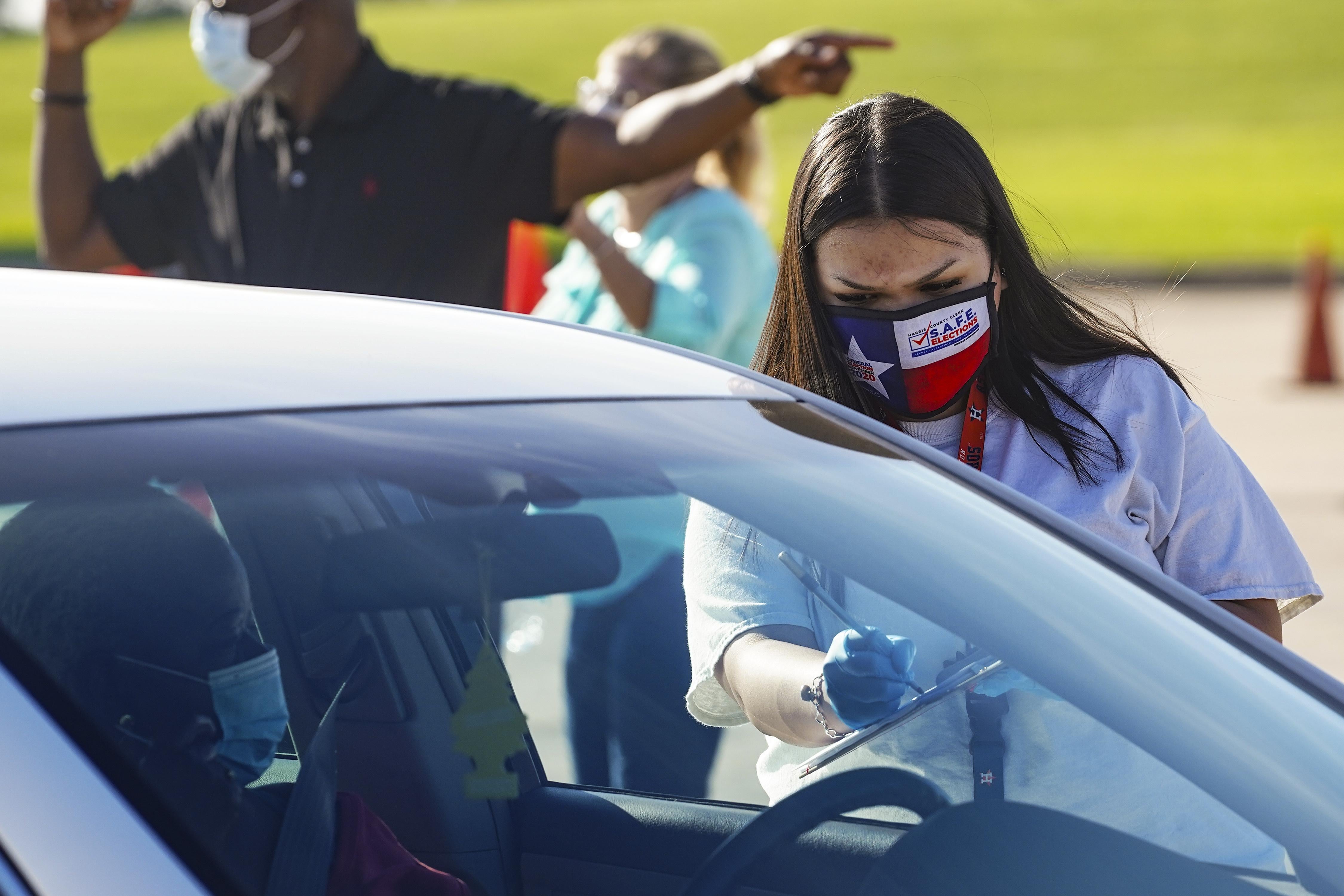A federal appeals court reinstated a Texas order late Monday night that limits the number of ballot drop sites in the state to one per county. Civil rights groups and Democrats pushing for expanded access to different ways to cast a ballot during the pandemic filed suit in response to Gov. Greg Abbott’s October 1 order curtailing the number of drop sites in the state. Last Friday, a federal court struck down the Republican governor’s limit on sites accepting ballots, which came after a gubernatorial proclamation in July expanding early and absentee voting options. But over the weekend a federal appeals court stayed that decision, allowing the October order to continue to be enforced, and on Monday—the eve of the start of early voting in Texas—the appeals court ruled that Abbott’s order would stand.
The three-judge panel—consisting of Trump appointees—agreed with Abbott that having more than a single site to drop off mail-in ballots would be unacceptably susceptible to voter fraud, though the court did not provide any evidence for why it believed this to be the case. The rules for hand delivering a ballot and for in-person voting are similar: both require a state-issued ID and a signature. For context, Texas’ restrictive voter ID rules make it challenging to vote, which tends to exclude minority and marginalized communities. Gov. Abbott’s July 27 order expanded some of the state’s voting procedures to account for the pandemic and counties went about establishing systems to collect and count ballots. It also allowed mail in ballots to be hand delivered starting on September 19. It wasn’t until two months after the initial proclamation, however, just a month before Election Day, that Gov. Abbott moved to rein in some of these efforts. It may be a coincidence, and it certainly may not be, that the move comes on the heels of poll-after-poll showing Texas to be neck-and-neck in this year’s presidential race. Since Texas now happens to be in play for the first time in a long time, the GOP-run state apparatus suddenly appeared less inclined to make it easy for voters to cast their ballot.
In the court’s ruling, the judges wrote that the lower courts had failed to consider that limiting the number of sites accepting ballots was actually part of a broad effort to make it easier to vote in the state. “One strains to see how it burdens voting at all,” Fifth Circuit Judge Stuart Duncan wrote, joined by Judges Don Willett and James Ho. “The October 1 Proclamation was part of an expansion of absentee voting opportunities beyond what the Texas Election Code provided. The fact that this expansion is not as broad as Plaintiffs would wish does not mean that it has illegally limited their voting rights.”
The problem with severely curtailing ballot drop options can be seen in “Harris County, the third-largest county in the nation by population and home to Houston, [which has] for weeks advertised a dozen ballot drop-box sites to serve 2.4 million registered voters spread over almost 2,000 square miles,” Bloomberg News notes. “The Texas counties with mail-ballot drop boxes were requiring voters to show photo ID and sign a register before personally handing in their ballot, just as Texans must do when voting at the polls.” Harris County officials, for example, expect more than 300,000 Houston residents alone will vote by mail, and many will want to hand deliver a ballot instead of relying on the postal system.
This post was updated after publication to clarify that the drop boxes in Texas are sites manned by election officials that process hand-delivered ballots.

